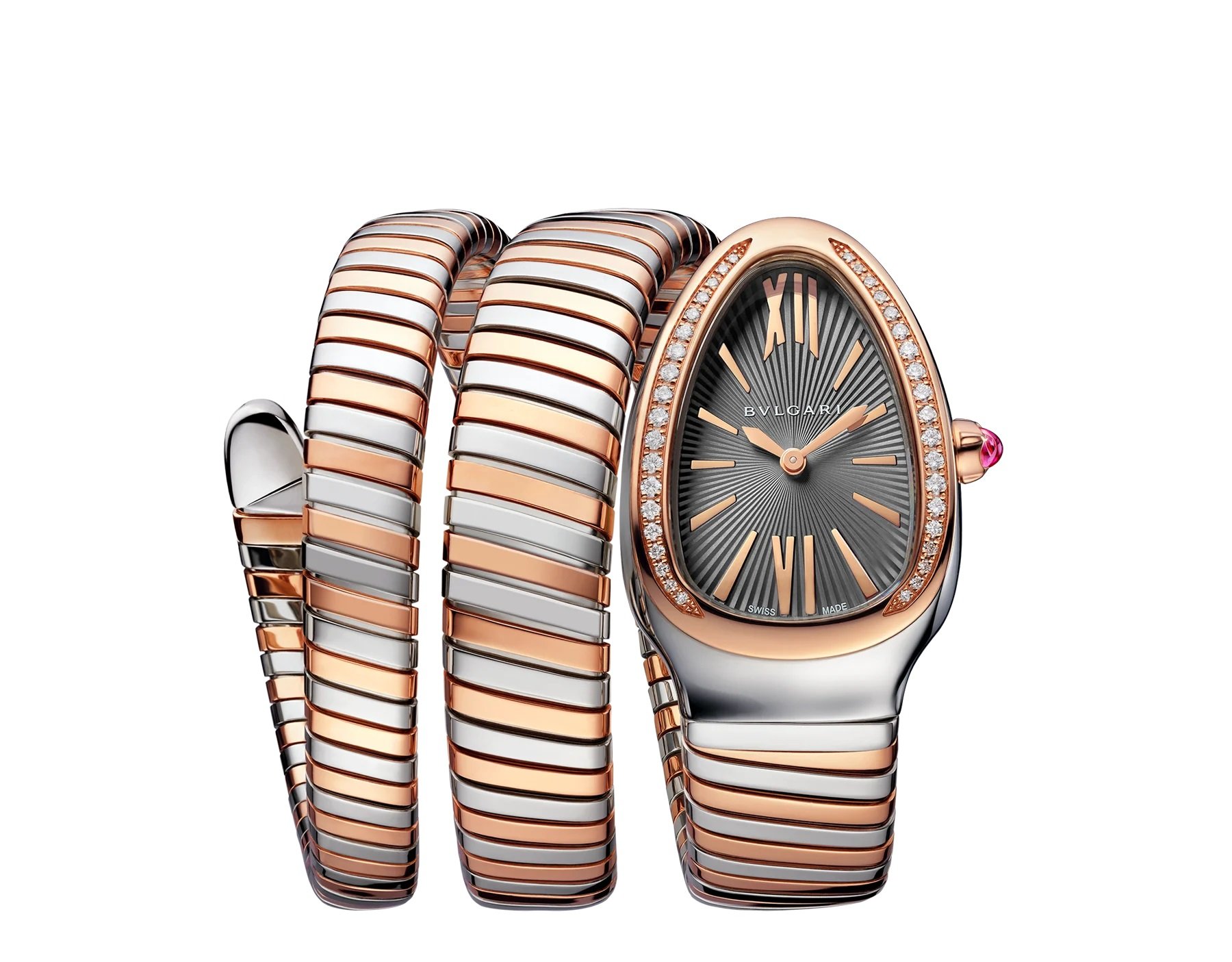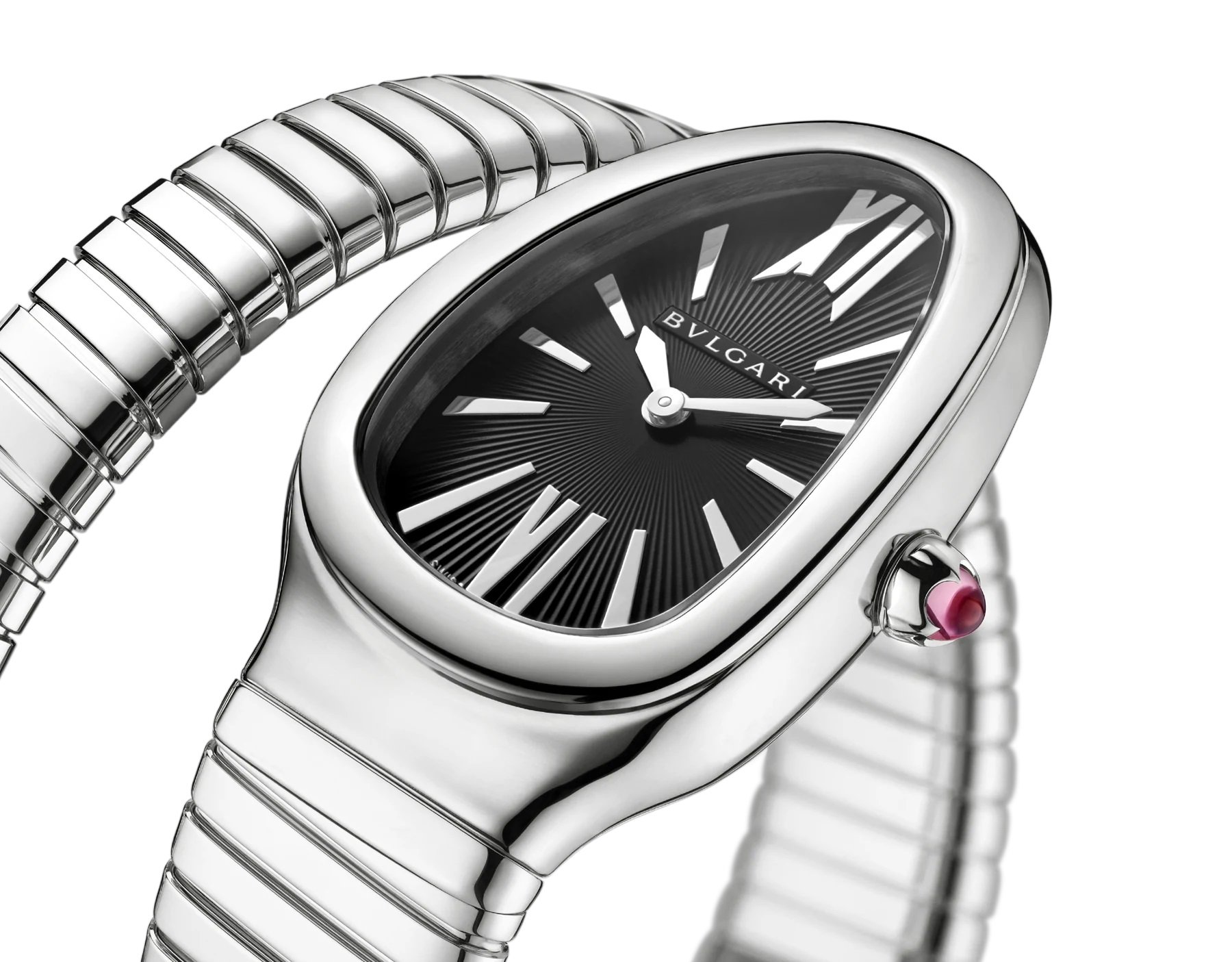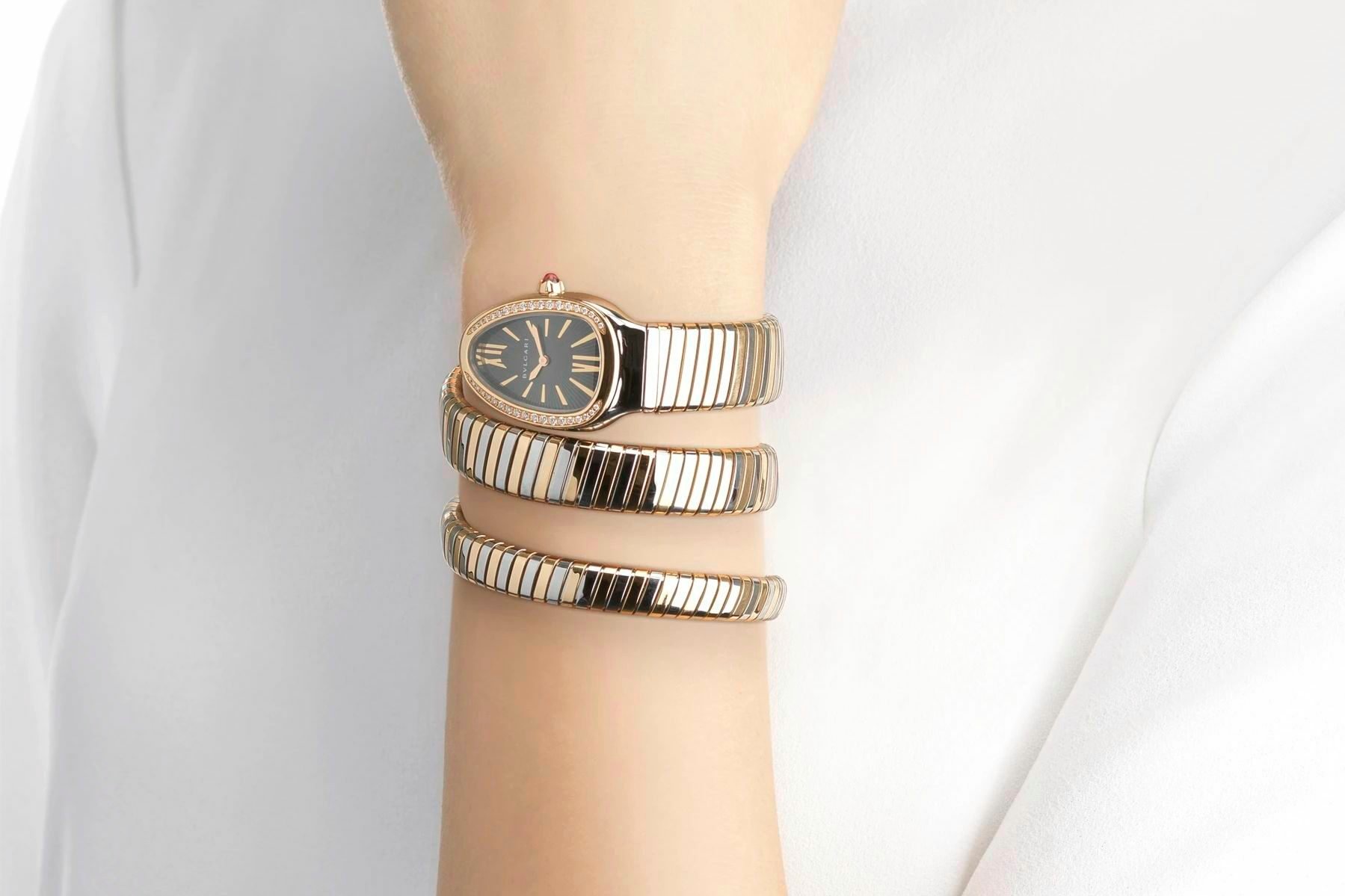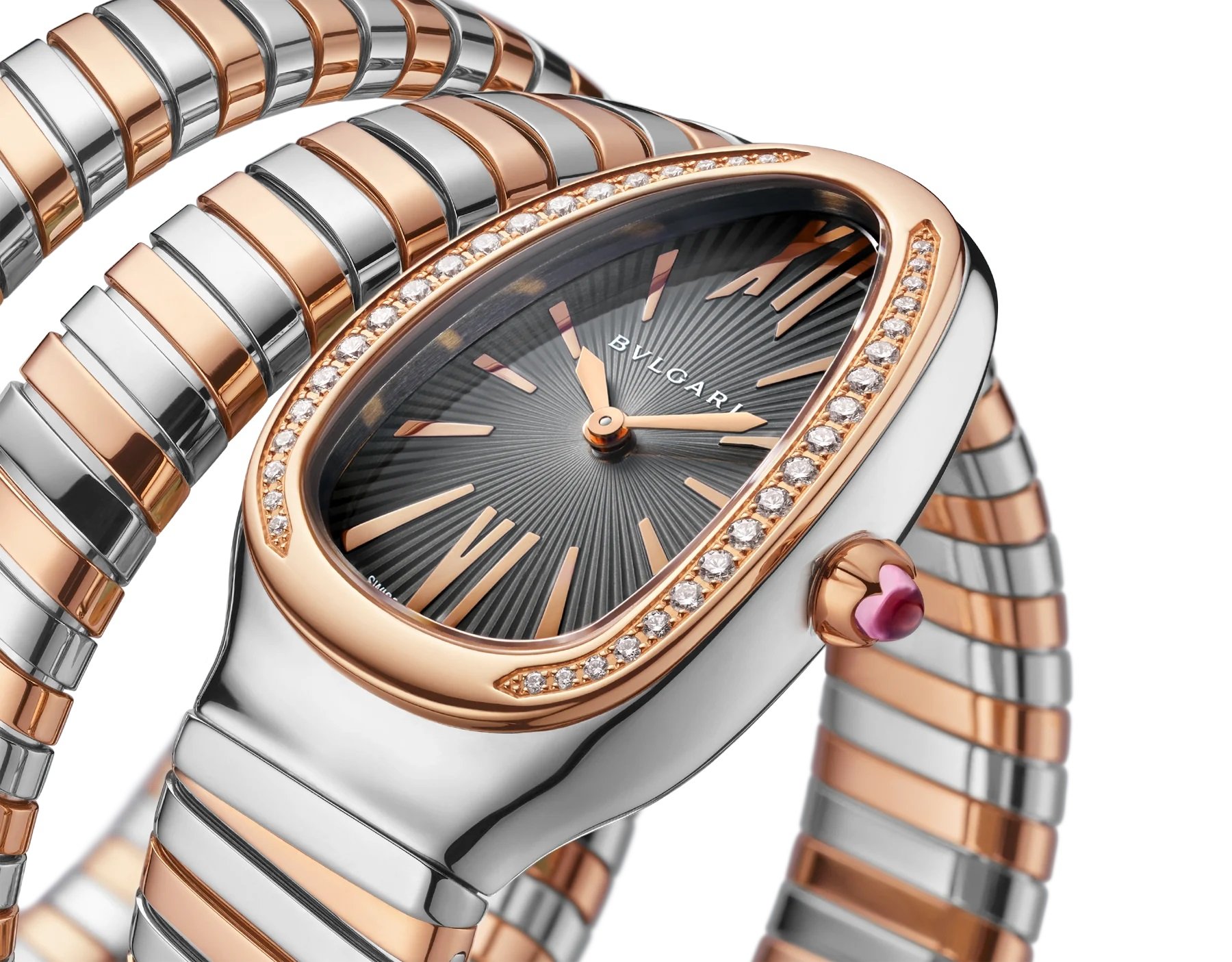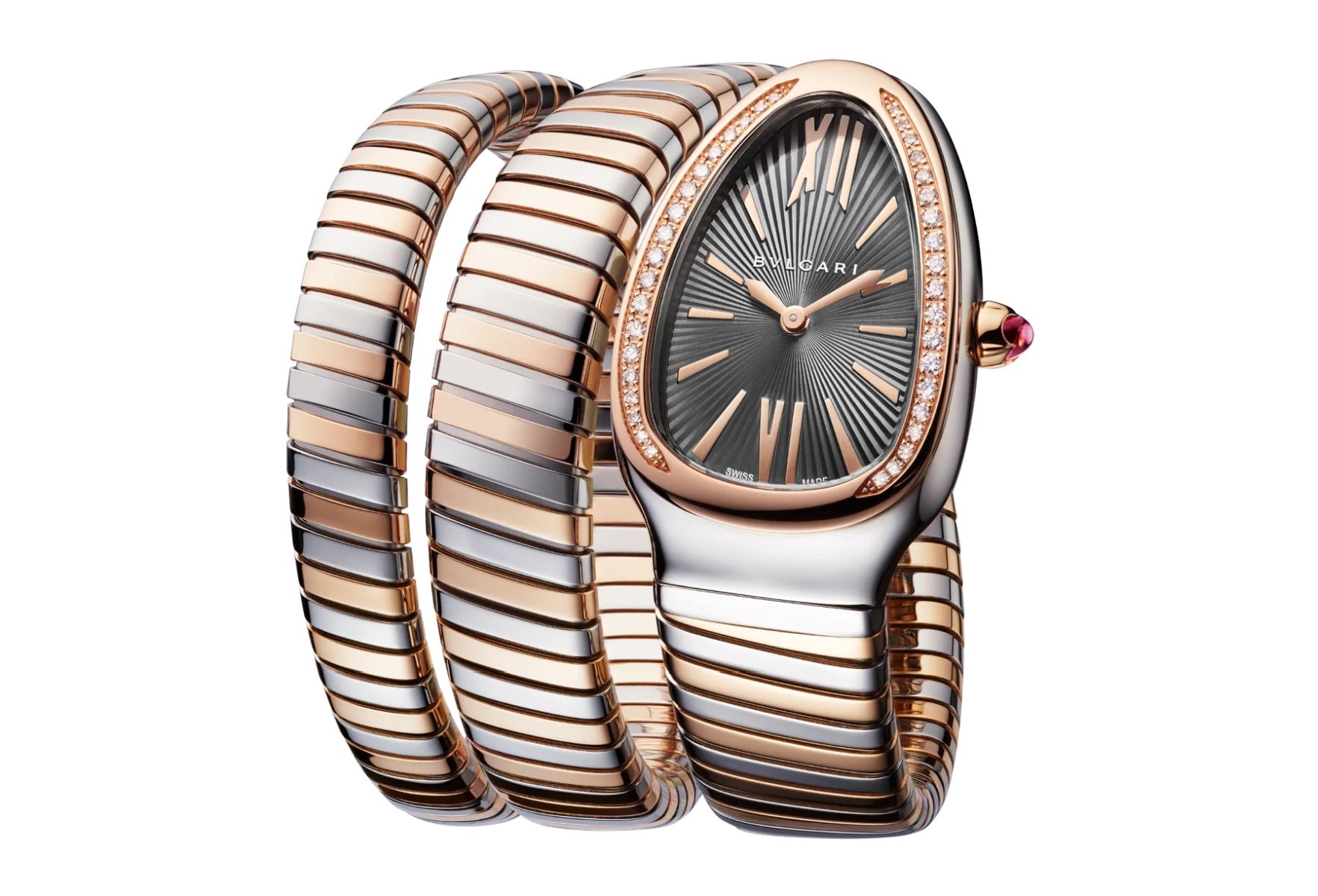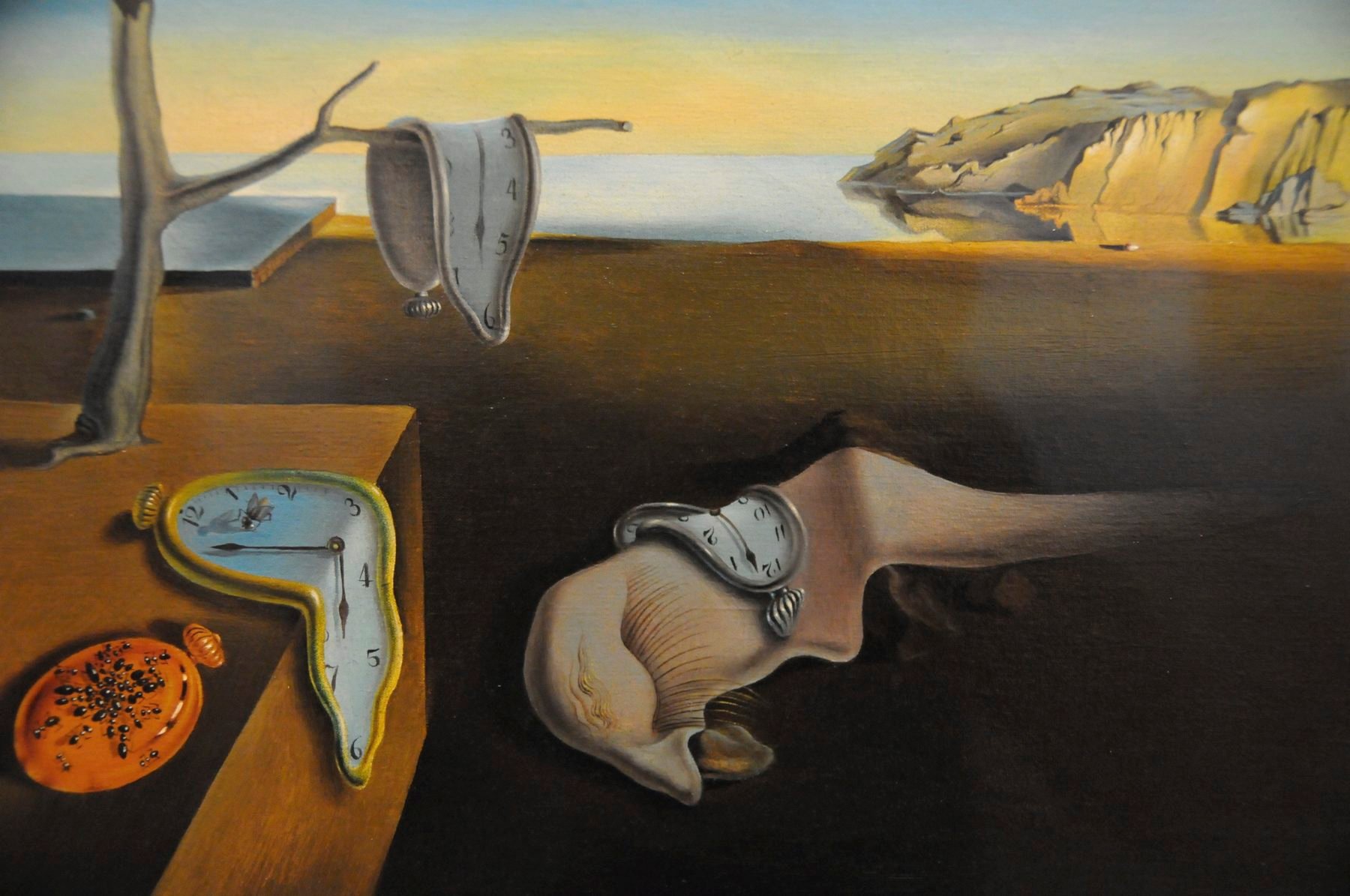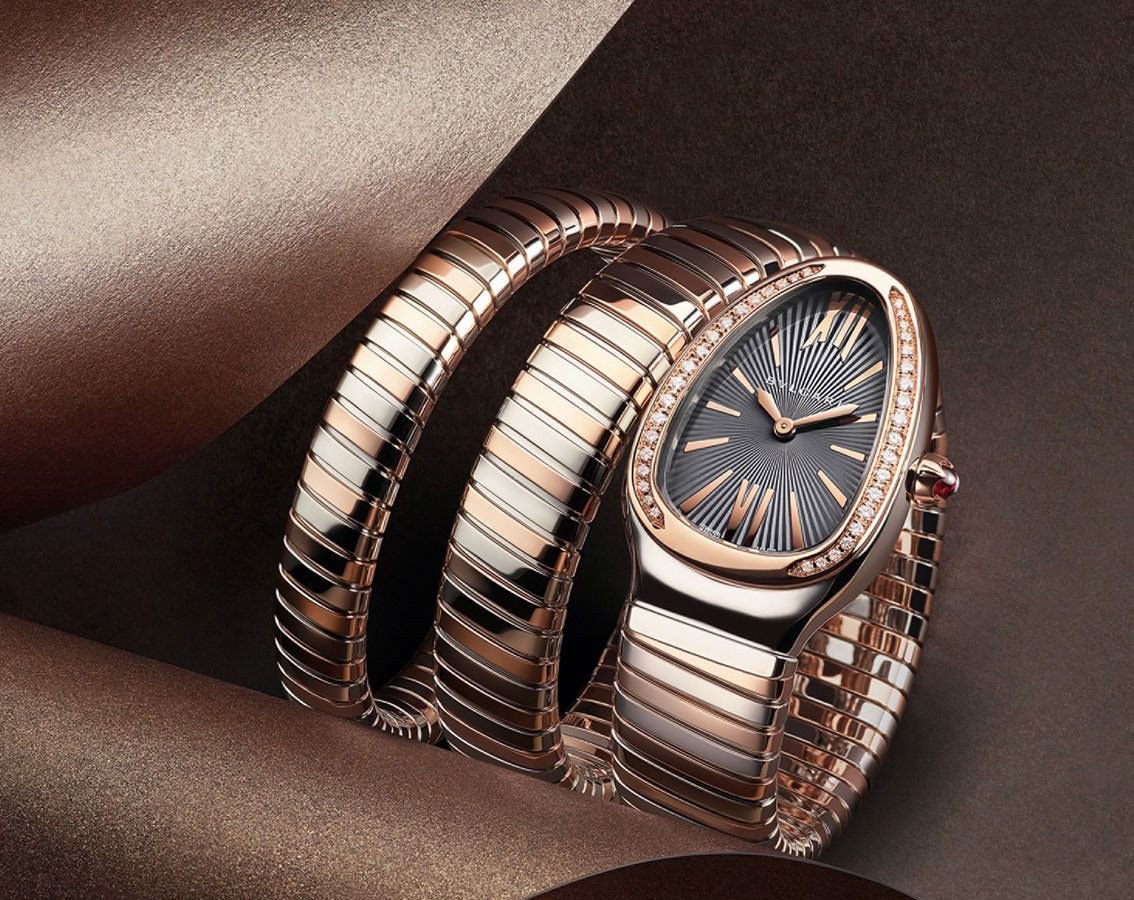My Guilty Pleasure Watch: Bvlgari Serpenti Tubogas
There are times in a person’s life when they depart the mundane. The stars align, the background noise of the day-to-day falls away, and one is left standing, full of life, defiant, in tune with oneself and the cosmos. These moments are when the poetry of existence reveals itself, and time and our place in it are not exempt. For such occasions, there is one watch I’d have on my wrist above any other, testament to myself and others that I am truly alive and full of wonder for the universe and my experience: the Bvlgari Serpenti Tubogas.
I am a man, as much as I am anything. The Bvlgari Serpenti Tubogas, (ref. 102680 as my personal choice) is very much marketed to women. One might say it is a women’s watch. I don’t take issue with that at all. Market to whom you please. Bvlgari understands its customer base. Bvlgari has just never met me. Or rather, I just have never purchased from Bvlgari. Social stigma is not enough for me to shy away from a watch such as this — one that captures my attention and imagination — only because of it being “feminine”. I love the serpent motif, I love the fluidity, and I love the sheer presence of it on a wrist. I know the title points to an element of guilt regarding the choice, but I don’t feel any.
 Bvlgari for the brave
Bvlgari for the brave
The serpent is as ubiquitous with Bvlgari as the panther is to Cartier. I’m not certain of its origin with the brand, but the cultural symbolism of your choice allows the imagination to run rampant. It is pervasive throughout Bvlgari’s catalog at any given moment. Continuously updated with new iterations, the potential customer can endlessly shop (or daydream) different orientations of a snake as a watch. In the Serpenti Tubogas, simplicity melts à la Salvador Dalí into a snake-head watch-case and a coiled, wrapping body of a bracelet. Surreal animal elements aside, the design likens to established and more subtle watches like the Cartier Tank.
Variations abound. Materials and color combinations range from rose gold, black ceramic, and steel, with a choice of diamonds or not. But my favorite option to shop is what Bvlgari refers to as spiral: single spiral, double spiral, all the way up to the pagan-priestess-level “seven-spiral”. These are how many times the body of the snake and/or bracelet of the watch wrap around the forearm. My personal favorite model and feminine grail is below, reference 102680.
Watch out for that snake!
My favorite, reference 102680, is only a double-spiral variant. For myself, the suggestion of the snake is extravagant enough without taking it further into extremes. The spiral is comprised of coiled stainless steel and 18K rose gold. This sprung, spiraling nature of the bracelet has a long tradition within Bvlgari’s catalog and is what earns it the “Tubogas” name. The Tubogas technique, developed in the 1940s, borrowed from plumbing manufacturing, the name literally translating to “gas tube”. It involves wrapping metal strands around an internal frame that is then removed. There is an excellent write-up on the history of Bvlgari’s Tubogas here.
The head, or case, of the watch is a svelte egg shape, suggesting the geometries of a serpent’s skull. It carries the two-tone theme of the bracelet, stainless steel with a rose gold bezel, set with brilliant-cut diamonds. The diamond-studded bezel plus the cabochon cut rubellite adorning the crown makes for a regal presence. Combine that with the gray lacquered dial in guilloché soleil, and you have a piece that presents softer than some of its other catalog siblings, but still fierce in its own right — a contradiction, perhaps.
At 35mm across, it marries with the bracelet in perfect proportion to create the entire animal. Roman numerals XII and VI and baton indices for the rest mark the hours. They follow not only the pattern of the dial’s guilloché texture but also frame the same snake-head silhouette of the case in the negative space of the dial where the hands dwell. The heart of the beast, as Bvlgari states, is a “quartz movement” — the least interesting aspect of the watch.
A work of art
So what is it about this watch that captures me so intently? Though it contains design elements from other less radical classics, and it certainly has its own robust provenance, the Serpenti Tubogas firmly sits nowhere. It is the timepiece incarnate of the melancholy that is Dalí’s “The Persistence of Memory”. Unbeholden to neither era nor style, the Tubogas tells time, all of it, not least of all the absurdist horror of our observation of time itself and our very fleeting place in it.
If I feel anything approaching guilt about this watch, it is only mild sheepishness about my explanation of why I love it. This piece speaks to me as some of my favorite painters do (i.e. Gerhard Richter and Georges Seurat). Gaze at any watch long enough and you can start the long trek into the existential relationship between Homo sapiens and time. The Bvlgari Serpenti Tubogas is a bullet train to full crisis. This watch, and certainly a dive into self and the nature of reality are not everyone’s cup of tea, I know, but it is for me. I like watches — the mechanics, the history, the designs. I love time — its passing, its meaning, and our attempt to capture it. For me, this watch marries all aspects of my love for horology and throws in some Gnostic mysticism for added measure.
A most forbidden fruit
I’ll spare everyone a primer on the symbolism of the snake in Gnostic thought; I don’t know enough to do anything more than confuse you further. But the most prominent and accessible symbolic snake for me is that of The Bible’s Genesis.
…what is the knowledge of time if not just a measured knowledge of our mortality?
This is pure speculation, but I am convinced it is the embodied knowledge of mortality that the serpent of Eden offered Eve — the fruit from the tree of knowledge. After all, what is the knowledge of time if not just a measured knowledge of our mortality?
In Indian mythology, the snake, or nāga, represents rebirth, death, and mortality, another fitting association. The ancient Greek symbol of the snake or pair of snakes wrapped around a staff (the caduceus) has ubiquitous use as a symbol for medicine. The snake in this case symbolizes the balance and relationship between life and death, medicine and poison (depending on dose). In a word, duality.
Bvlgari Serpenti For The Strong
That is why I am in adoration of a watch that is a snake, a snake that tells time. The combination of snake and time-teller is a match made in the heavens, as far as I’m concerned. Defying convention, defying (or redefining) standards of design, embracing expression, and telling the story of our dance through time: these are the elements that, for me, set this watch far apart from any other. That I might wear this snake upon my wrist and stand defiant of the fates, of the crushing beat of time, and glimpse through to the infinite beyond myself and mortality, well, there are worse things one might do with a watch and a Sunday evening.
You can learn more about Bvlgari’s Serpenti Tubogas in all its iterations here.

